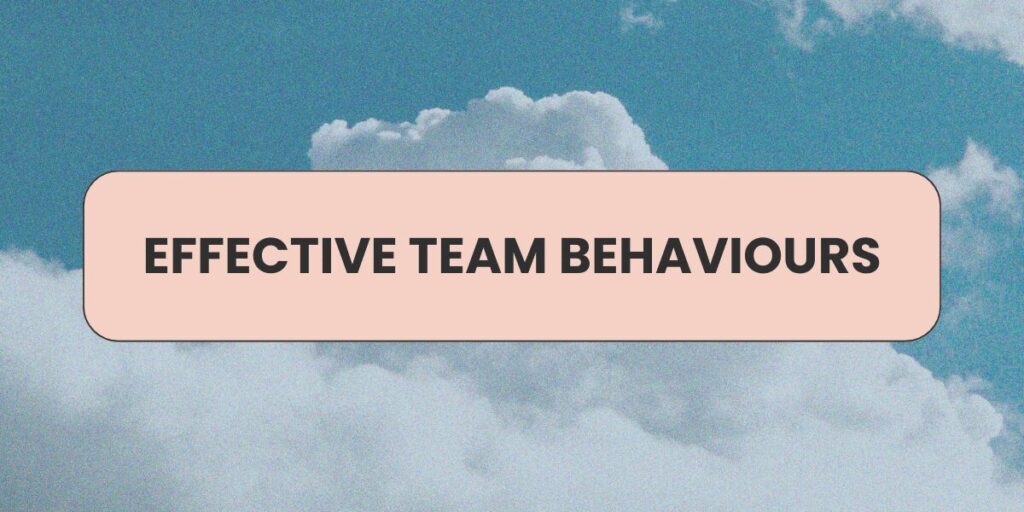Have you ever noticed humans like organising things into categories, particularly at work? Think What Colour Is Your Parachute, Edward De Bono’s Six Thinking Hats and the Colour Code, based on four basic personality types, think: “I’m a red, don’t make me mad!”
[Read What Colour Is Your Parachute, read Six Thinking Hats and watch a short explainer of the Color Code.]
I recently revisited the idea of categorising people’s skills as shapes as an interesting way to understand your strengths. While I firmly believe everything is a hybrid, and contextual, it’s an interesting concept. Today, we’re talking about Ts, Es, combs and other skill shapes…
T-shape skills
A T-shaped person is a label for someone with a broad range of skills and knowledge in multiple areas (the horizontal bar of the T) while having deep expertise in one specific field (the vertical bar of the T).

Employers value T-shaped people because they are adaptable and collaborative due to their range of experiences but can hone in on their speciality area.
In 2010 IDEO’s CEO, Tim Brown, said the concept of T-shaped people had influenced their approach to talent management as the vertical stroke of the ‘T’ aids innovation, and the horizontal stroke represented the ‘disposition for collaboration across disciplines’. In a nutshell, they are perfect members of a cross-functional team.

Strengths of the T skills shape
- Deep expertise: The vertical bar of the ‘T’ represents specialised knowledge or skills in a specific field. This allows for high-quality work and problem-solving in that area.
- Versatility: The horizontal bar indicates a breadth of skills and knowledge in other areas. This versatility enables T-shaped individuals to collaborate across disciplines and contribute to various aspects of a project.
- Improved collaboration: The broad knowledge base makes it easier for T-shaped individuals to understand and work with specialists in other fields, fostering better teamwork and communication.
- Adaptability: The combination of depth and breadth in skills allows T-shaped professionals to adapt to changes and new challenges more effectively.
- Innovation: The ability to see connections between different fields can lead to innovative solutions and ideas.
Weaknesses of the T-shaped worker
- Dilution of skills: While having a broad skill set, the horizontal bar might not represent deep expertise in those additional areas, which can sometimes lead to a superficial understanding.
- Overreliance on specialisation: The deep knowledge in one area might lead to a reluctance or inability to venture beyond that comfort zone, limiting flexibility.
- Resource heavy: Developing and maintaining a T-shaped skill set requires continuous learning and adaptation, which can be time-consuming and resource-intensive.
- Team dynamics: In a team of T-shaped individuals, there might be overlaps in the broad skills, leading to confusion or conflict over roles and responsibilities.
- Risk of obsolescence: The deep expertise in one area might become less relevant over time due to technological or industry changes, requiring significant re-skilling.
The T-shaped working style offers a balance of depth and breadth in skills, fostering innovation and adaptability. It also requires continuous learning, sometimes leading to challenges in team dynamics and role clarity.
I skills shape, and Pi skills shape
Closely related to the T-skills shape, I-skills-shaped people are, for example, research scientists or academics who have deep and narrow expertise. Pi-skills shaped people (from the Greek letter π) have evolved to have two expertise points, adding greater career flexibility or capabilities: data scientists are a great example of this, blending statistical analysis and computer science.
Comb-Shape Skills
However, many of us have chosen a varied, non-traditional career path in today’s workforce. That’s right, we’re talking about about multi-hyphenates (as per Emma Gannon’s book The Multi-Hyphen Method), slashies, and portfolio careers. Enter the comb-shaped skilled person.
Fun fact: The term “multi-hyphenate” was coined in the 1970s to describe entertainers who advanced beyond the combination of acting, singing, and dancing.

A comb-shaped person takes the T and adds to it with several points of expertise. For example, someone I know is a qualified solicitor and programmer with experience in financial markets and information security — making them a great candidate for consultancy.
The E-shaped worker
One recent development is the E-shaped individual. They have expertise in multiple areas but can also bring them together to create a holistic solution — in some models, this is represented as the four “Es” — experience + expertise + exploration + execution.

I suspect I’m more of an E than a comb. I have a base of core communication skills and a million useless facts, which I can combine with deep knowledge of consumer marketing, digital strategy and psychology. This approach has allowed me to pivot from lifestyle PR to banking services to the music industry.
A tip for both Es and Combs: ensure you can tell your career story concisely and persuasively to potential employers. How will this mélange of skills and experiences contribute to the current challenges?
Final thoughts on skills shapes
If you’re curious to find out what sort of “shape” you are, the following questions may help:
- What areas of expertise do I already have a deep understanding of?
- What fields or industries am I interested in or passionate about?
- What skills or knowledge areas would I like to develop further?
- How can I apply my skills and knowledge to collaborate with others from different fields or backgrounds?
- How can I use my skills and knowledge to solve complex problems or challenges in my field or industry?
Ultimately, the best approach for you will depend on your interests, goals, and strengths. Of course, it’s never too late to change directions or develop a skill (for proof and a healthy dose of inspiration, check out the Guardian’s A New Start After 60 series).
If you enjoyed this article, subscribe to the Plein-Air newsletter for weekly posts on creativity, curiosity and working better.

